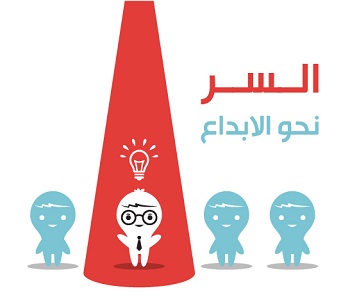The secret to creativity

Jeffrey Baumgartner
Creativity
12
The secret to creative thinking is to turn problems into thought-provoking challenges. Then, great ideas will breed and solutions will continue to emerge.
Almost every creative idea is a potential solution to a problem. Einstein's theory of relativity was a solution to a contradiction between electromagnetism and physics, Post-it notes were an attempt to make use of glue that has little stickiness, Picasso's cubist paintings were about solving the problem of representing three-dimensional shapes in a two-dimensional oil painting. And so on...
Before you even think about generating ideas, you need to turn your problem into a challenge. Because if you start generating ideas to solve the wrong problem, you may get great ideas – but they’ll probably be bad solutions.
A self-employed woman is shopping and sees a beautiful dress. She tells herself that it will be perfect for an upcoming reception where she hopes to make a good impression on potential clients. Unfortunately, the dress costs €3,000 and her bank account is almost empty. She thinks: “How am I going to make €3,000 to buy that dress?” And she gets some brilliant ideas.
But the truth is, her problem has nothing to do with the dress. Her problem is that she needs to build new business. One way to do that is to get new clients. Wearing a stunning dress to a reception might be one way to solve that problem. But there are other solutions – and many of them are likely to be more cost-effective than a €3,000 dress, especially if she doesn’t have a lot of money.
Instead, she should ask herself, “How can I get new clients for my business?” or better yet, “What are some ways I can grow my business?”
The last question or challenge may lead to ideas such as offering new products or services to existing customers, raising their prices, asking for referrals and other moves that focus more on growing their business while paying less attention to the new dresses.
Most people are like the woman in the story above. When faced with a problem, they immediately look for a solution, rather than looking into the problem itself. Creative people do better than that. They start by examining the problem and then turning it into a creative challenge.
The best way to turn a problem into a challenge is to write the problem down in the middle of a piece of paper. Now, try to break down the problem. Ask yourself, “Why is this a problem?”, “What is causing this?”, “What is behind this?”, “What are the other issues at stake?” etc. Ask “Why?” until you can no longer answer yourself. Write all your answers down on the paper. At this point, the core of the problem and its related issues will be clear. Let’s call it the “Big Problem.”
The next step is to turn the big problem into a shorter, simpler challenge or set of challenges. Challenges often begin with:
• “What are the ways I/we can…?”
• “How can I/we…?”
• "What are the types of...that could...?"
Keep your challenges as simple as possible. And avoid:
• Restrictive criteria
Restrictive criteria stifle unbridled creativity. So keep them out of the challenge—but use them later when it comes time to evaluate ideas.
• Vague challenges
Challenges like “need money” are not clear enough and likely lead to unclear ideas. So make your challenges clear to everyone. Formulate them using the vocabulary above.
Once you find your challenge, generating ideas to solve it is easy. But before you start brainstorming, there are a few things you should keep in mind:
• Generate ideas first, nothing more. Only when you are done should you think about reviewing them and deciding which idea(s) to implement.
• When generating ideas, whether in a group or individually, refrain from criticizing anyone. Moreover, it is essential to write down every idea, no matter how ridiculous or impossible it may seem to you. Sometimes the most ridiculous ideas are the most creative and inspiring.
• Don't stop at the first idea that comes to you. The first good idea that comes to the mind is rarely the most creative - often because it is always the most obvious. So it is better to generate several ideas and then decide which one to choose.
So the secret to generating great ideas is to start with a big challenge. Then, produce, produce, produce ideas.
Did you benefit from the information provided on this page?
visitors liked this page



